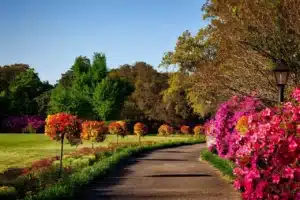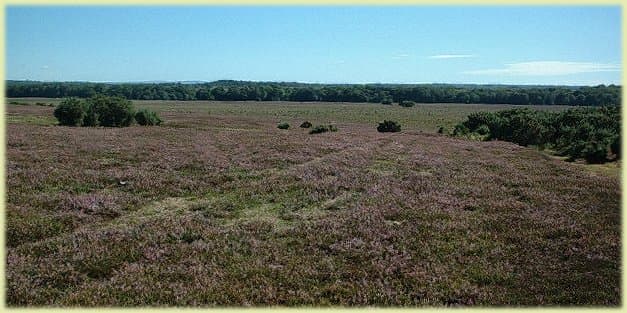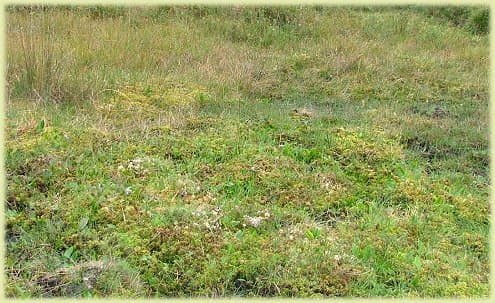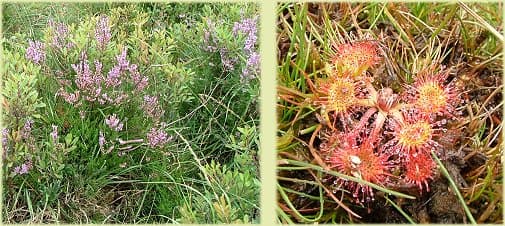New Forest bogs & wetlands
New Forest
bogs & wetlands
Overview
The bogs and wetlands of the New Forest are a very important kind of habitat, and the presence of them throughout the Forest helped contribute to the area’s designation of an SAC, or Special Area of Conservation – a European Designation to ensure better protection and management for delicate areas.
The wetland areas appear throughout the New Forest, in low-lying areas of heathland, probably the Forest’s most important habitat. They differ in terms of size, with some bogs being under a few hundred square feet and other areas being much larger, but all share the same basic characteristics, flora and fauna.
Some New Forest bogs may support year-round ponds which attract a good variety of insect, invertebrate and amphibian life, as well as offering fresh drinking holes for the New Forest ponies, cattle and deer.
Other bogs may just be wet under-foot, with no apparent permanent source of surface water like a pond of stream.
Wildlife of the New Forest bogs
The most notable difference between an area of wetland and dry Forest heathland is the vegetation. Heather covers the majority of heathlands throughout the Forest, and this hardy, low-lying plant also inhabits the boggy areas. But growing alongside the heather in abundant quantities are various species of grass, rushes and sedges.
Bog myrtle is also very common, a fairly low-growing (less than 1m tall) shrub with olive-green leaves and a distinctive herby-pine smell. At ground level, sundew can be found, as well as a number of different species of moss and lichens.
Sundew are tiny carnivorous plants that secrete a sticky liquid to cover their flowers. When small insects, such as midges, land on the flower they get stuck and the body is slowly broken down and digested by the plant.
The delicacy of New Forest bogs
The bogs throughout the New Forest have recently been undergoing a major conservation effort, and many have been restored to good health.
The ‘Sustainable Wetland Restoration in the New Forest‘ Life3 project succeeds the Life2 project to further understand and restore the bogs and mires of the New Forest. The Life projects have been undertaken jointly by bodies such as the Forestry Commission, National Trust and Natural England, and have received generous grants from the European Parliament in line with the New Forest being an SAC.
The boggy areas are easily churned up by roaming ponies and cattle, especially after particularly wet spells. Human foot-traffic can also play a major part in the damage, and many paths have been reinforced around such areas. Heather matting has been laid in spots that are particularly prone to erosion, and delicate banks have been sured up with timber panelling.
To help with the conservation effort, visitors to the New Forest should view the bogs from either the paths or from the more solid, dry heathland at the edge of the boggy areas.
If you have inadvertently cut across the Open Forest and find yourself surrounded by bog that you have to cross, take great care and tread lightly. Try and keep to the raised hummocks, and find the shortest and quickest route to drier land!
Animals of all varieties can be found around the New Forest bogs. Where there are permanent ponds and streams, the animal life is greater, and includes frogs and toads, newts and grass snakes, as well as many other small water invertebrae and insects.
Related Pages:

How To Make Traveling Less Stressful
How to Make Travelling Less Stressful Travel should refresh and inspire you—not leave you feeling frazzled and drained. Unfortunately, missed connections, overloaded itineraries, and overstuffed suitcases can turn even the most exciting holiday into a

Prep Your Car for Long Nature Drives
The engine hums quietly as dawn light filters through towering pines, and you’re miles from the nearest gas station with nothing but winding mountain roads ahead. Your car isn’t just transportation on these journeys—it’s your

Rugged Looks Built for Park Terrain
Whether you’re driving winding forest roads or parked at a trailhead surrounded by mossy oaks and chirping robins, your truck says a lot about your adventure style. For many outdoor enthusiasts, function comes first—but that

Planning Safe Camps
Setting up camp in remote locations is the kind of adventure many dream about—off the grid, fresh air, starry skies. But anyone who’s tried it knows there’s a fine line between a fun escape and

How to Find the Most Beautiful Secret Hotels
If you’re craving a luxurious, quiet retreat away from the hustle and bustle, a secret hotel might be the getaway you need. You can check into a hidden spot in an atmospheric city, a gorgeous

The Most Thrilling Shore Excursions
Do you want to know about the most thrilling shore excursions? If you’re after an action-packed escape on the British coast, New Forest National Park really does deliver some of the wildest shore excursions for



